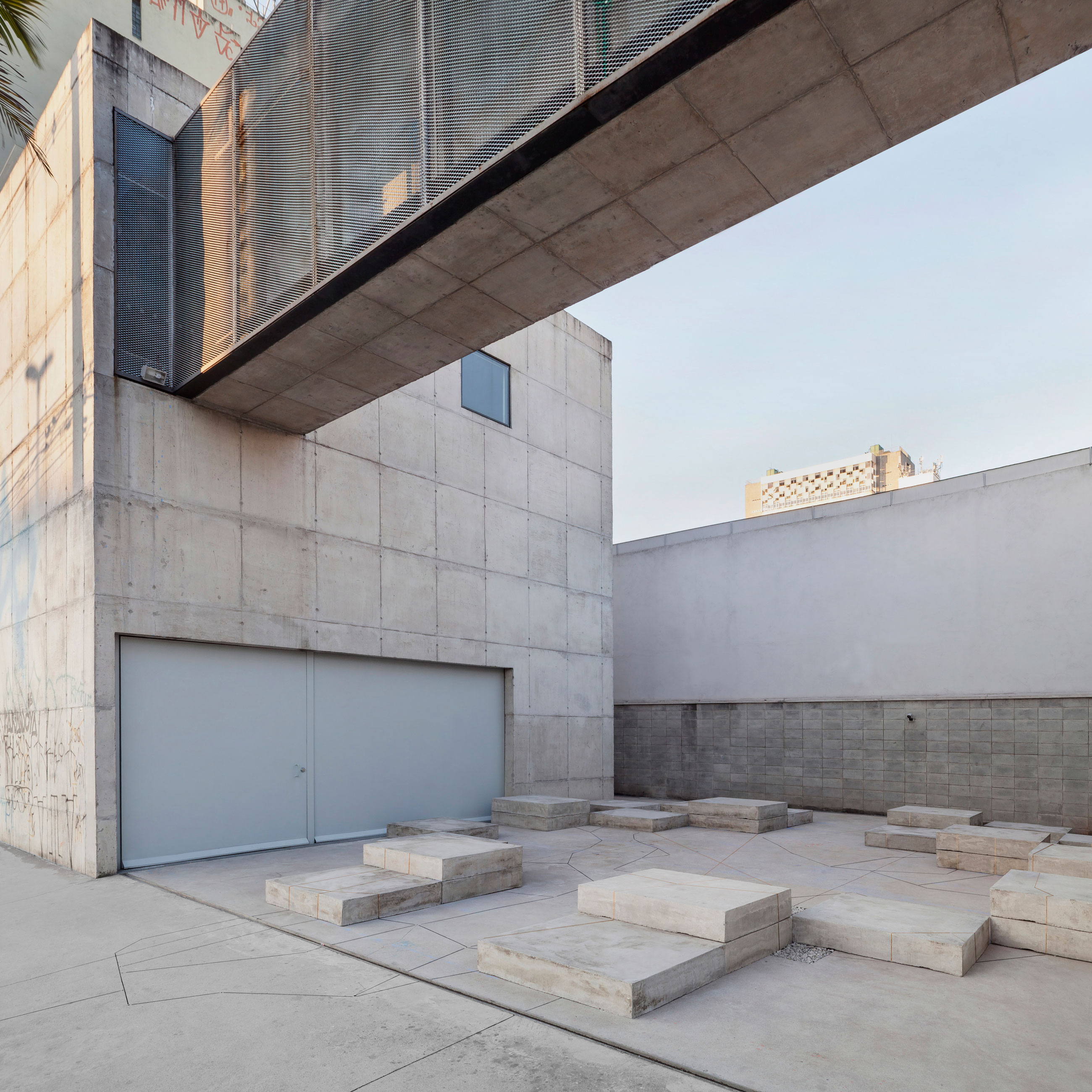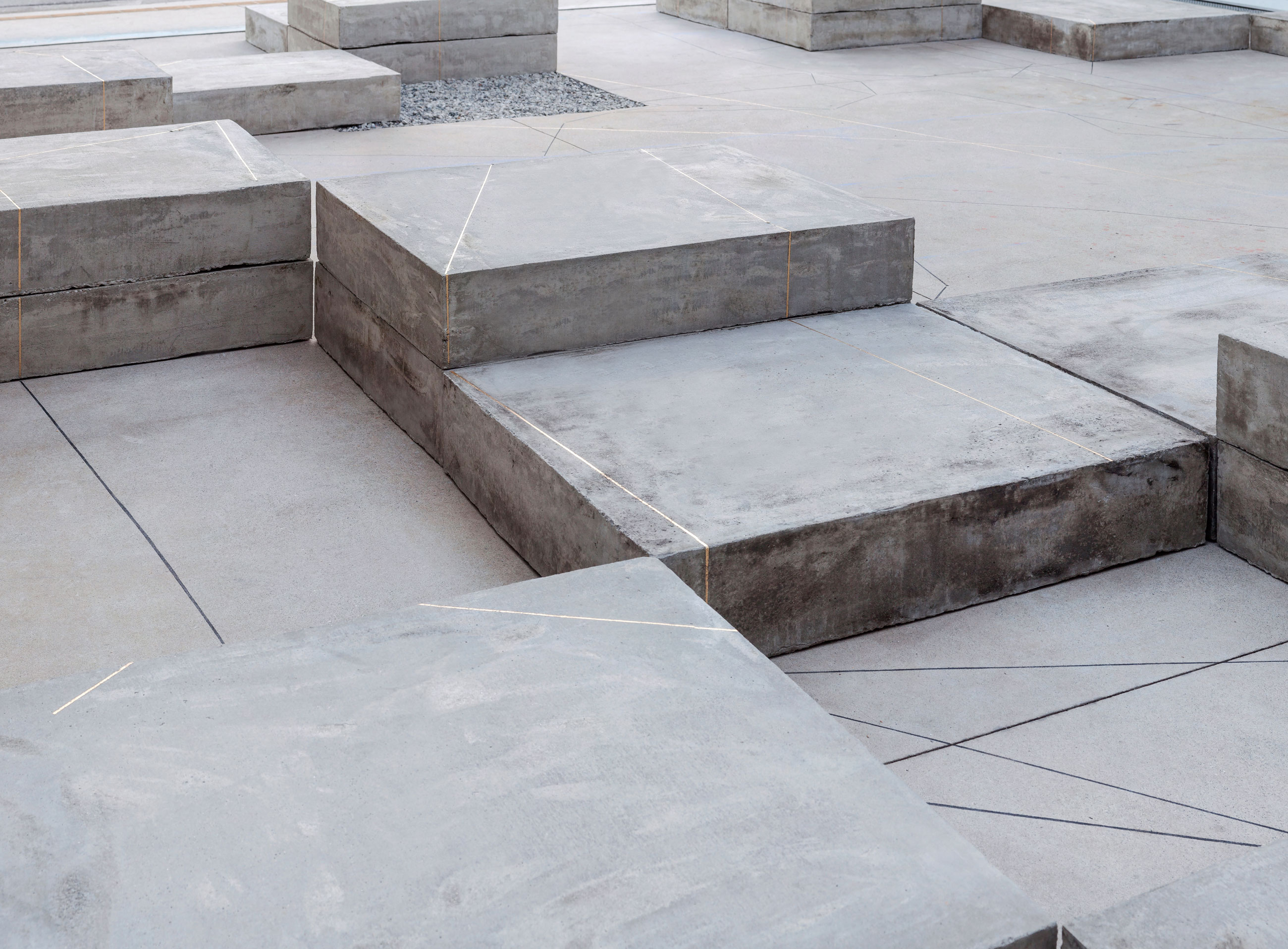Cielo Raso
in SITU
In Cielo Raso, Sandra Gamarra departed from the construction grid embossed in Galeria Leme’s concrete facades, to explore the grid as an element that transcends its architectural condition and affirms itself as a tool for human cognition with a profound effect on our spatial culture. The artist was interested in juxtaposing two notions of grid: on the one hand, the grid is a symbol of Modernist ideology, expressing the impetus towards the future and the human logic imposed to the ‘chaos’ of nature; on the other hand, pre-Columbian civilizations’ understanding of this geometry which represented a greater, cosmic and mystical logic, through which Man could understand the order of nature and subsequently act on it.
Gamarra created a set of concrete blocks aligned to and with the same dimensions as the orthogonal structural grid embossed on the gallery’s facades. The blocks were displayed in a composition in-between a construction site and the ruin of a future building. This configuration outlined a central void with a cruciform floorplan, referencing the stepped cross known as the Inca Cross or Chakana, a fundamental symbol for pre-Columbian cultures which symbolized the connection between the earthly and the ‘superior’ world. The geometry of this cross is based on observations of celestial bodies and natural cycles. Its four sides represent the four directions and the four seasons, and each segment is divided in three steps symbolizing the worlds of Gods, men and the dead. Its shape and meaning were pervasive in the everyday life of these civilizations.
The Chakana outlined in the gallery’s courtyard had one of its ends open to the street, inviting pedestrians to enter. Andean mythology understands the center of the Chakana as the unknown and the sacred. From within this space, visitors could see that the blocks and the courtyard floor were punctuated by screws and nails, and crisscrossed by lines of graphite and gold-leaf, drawing a constellation-like immersive map of South America’s land routes. The blocks had also a subtle gridded texture of fabric embossed onto them. These layers evoked other conceptions of grids shaping human life and culture, from the ones touching bodies, to those erecting the built environment, towards those which allowed Man to create meaning by correlating their land to the cosmos.
SITU #5
Cielo Raso
by Sandra Gamarra (1972, Peru)
concrete, golden leaf, graphite and screws
variable dimensions
02.09.2016 - 03.12.2016
Galeria Leme, São Paulo, Brazil
Photos by Filipe Berndt, courtesy of the artist and Galeria Leme






